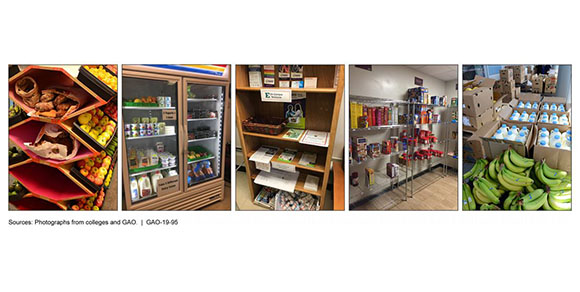
The Government Accountability Office (GAO) recently released a report estimating the prevalence of food insecurity among college students in the United States. The report authors reviewed 31 studies to determine what is known about the extent of food insecurity on college campuses, and analyzed the most recent National Postsecondary Student Aid Study (NPSAS) data to estimate the number of college students at risk for food insecurity.
The studies that the GAO reviewed estimated that food insecurity could affect a wide range of college students – from 1 in 10 (9%) to over half (50%). Twenty-two of the 31 studies reviewed estimated that over a third (33%) of college students were experiencing food insecurity. Several studies estimated that students at 2-year colleges were more likely than those at 4-year institutions to be food insecure.
The report authors also identified risk factors that are commonly associated with food insecurity and analyzed NPSAS data to determine how common those risk factors are among undergraduate students. The seven risk factors identified are:
- Having a low income
- Being a first generation college student
- Receiving Supplemental Nutrition Assistance Program (SNAP) benefits
- Being a single parent
- Being disabled
- Being homeless or at risk of homelessness
- Being a former foster youth
Having a low income was the most common risk factor and affected about 2 in 5 (39%) undergraduates. Three-quarters (75%) of low-income students also experienced additional risk factors – of the low-income students, about a third (31%) are first-generation college students, a third (31%) receive SNAP benefits, and a quarter (25%) are single parents. Risk factors were more prevalent among students attending two-year institutions than their counterparts attending 4-year institutions. The number of college students experiencing one or more risk factors has increased (from 28% to 39%) since 1996, meaning that more students are at risk of being food insecure.
Academic libraries, like public libraries, are well-positioned to help address food insecurity among college students. They can distribute information clarifying which students are eligible for SNAP (which can often be confusing), create library guides pointing students to research and resources, and set up displays with information about food resources on campus.
The full report can be found here.
Note: This post is part of our series, “The LRS Number.” In this series, we highlight statistics that help tell the story of the 21st-century library.